MIT Self-Assembly Lab's Rapid Liquid Printing technology can "print furniture in minutes"
Researchers at the Massachusetts Institute of Technology have developed a revolutionary new form of 3D printing that can produce large objects such as chairs in a fraction of the time of regular printers.
The Self-Assembly Lab worked with US furniture company Steelcase to develop the process known as Rapid Liquid Printing, which involves extruding material from a computer-controlled nozzle into gel.
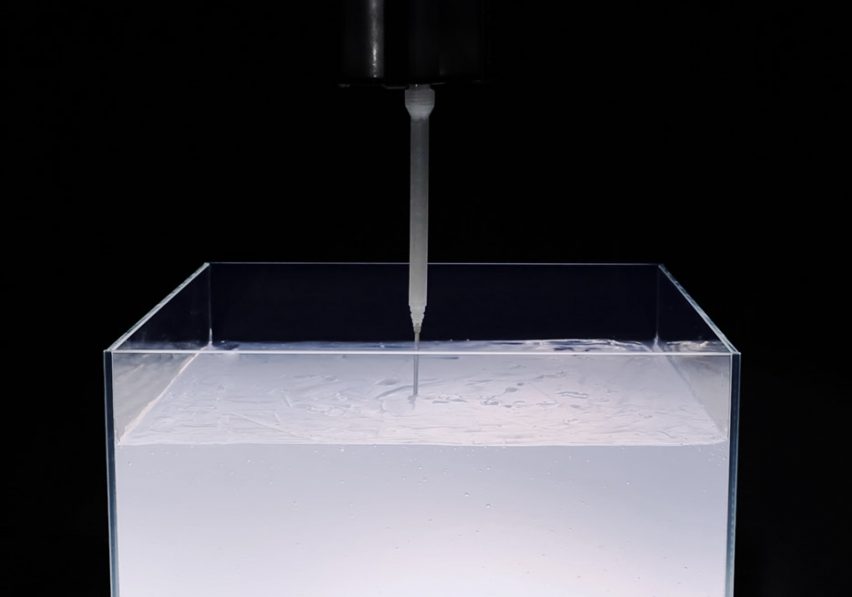
This allows them to print large-scale structures very quickly, creating a range of possibilities for furniture production.
"In the beginning we started with this question: could you print furniture in minutes?" lab director Skylar Tibbits told Dezeen. "If you look at printing from that perspective it forces you to think about it in a completely different way."
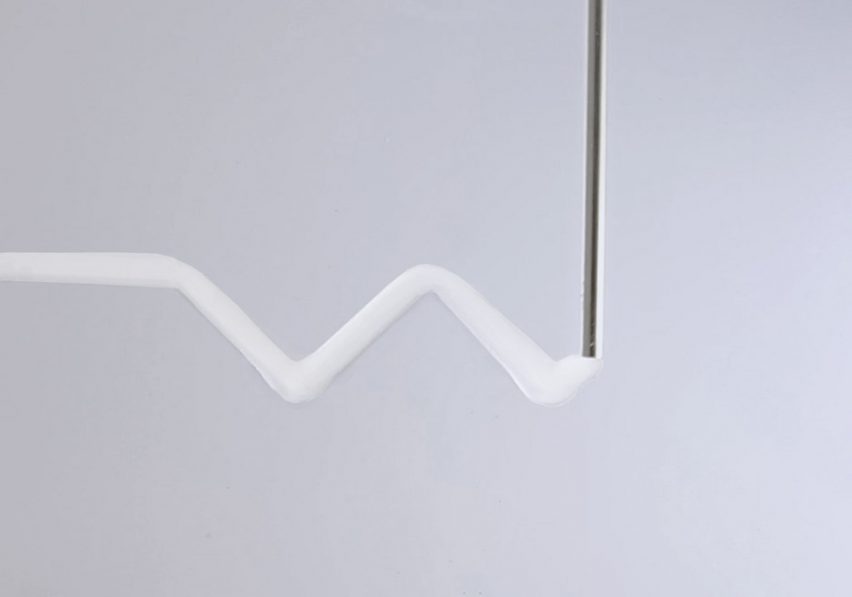
The team's aim was to tackle the three main challenges that they believe have prevented 3D printing's widespread adoption in manufacturing: speed, scale and material properties.
"Most of the time we can only print centimetre-scale structures, and for furniture, it's unfeasible," said Tibbits.
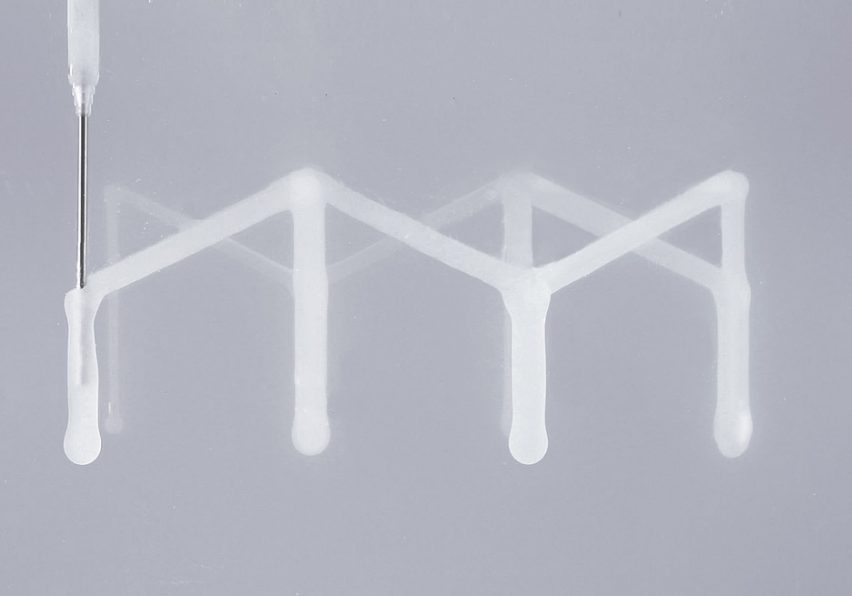
"There are a couple of reasons why the properties aren't so good," he added. "Nearly every printing process utilises layers, and those layers degrade the structural property of the material compared to a consistent material all the way through."
Rapid Liquid Printing allows the robotic aperture to draw freely in 3D space, constrained only by the size of the tank.
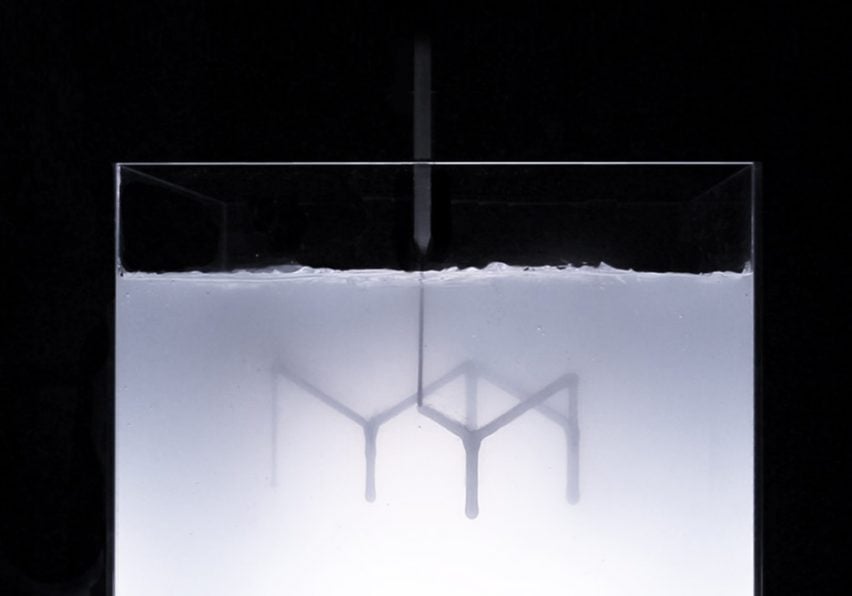
The gel, similar to hair gel, suspends the extruded material so it does not have to fight gravity or require a base plate to build upon.
The team has experimented with a variety of printing materials, including plastics, rubbers and polyurethanes with different properties.
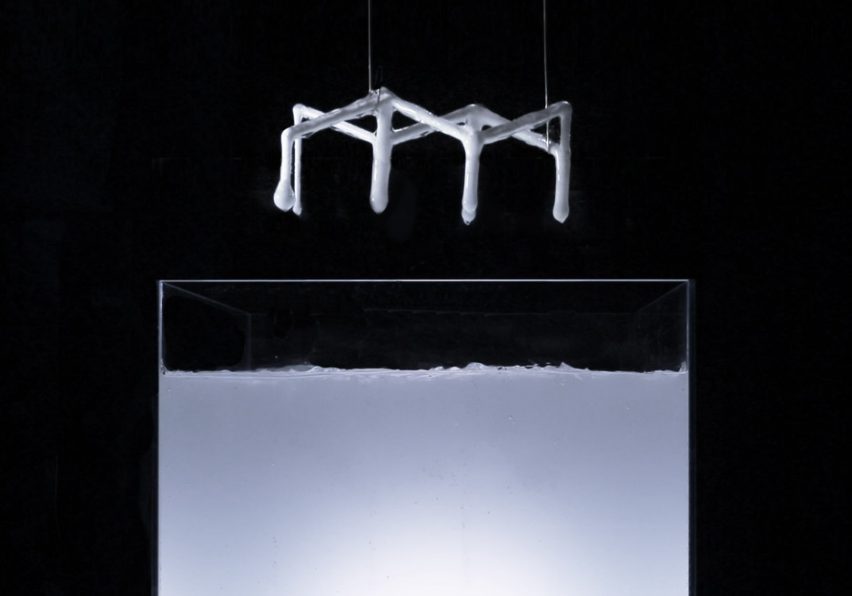
In each case, two materials are mixed in the nozzle and chemically cure as they are extruded.
The material is pushed out like toothpaste from a tube, so has better structural integrity than if it was laid down as a series of layers – essential if it needs to bear weight.

One of the first applications of Rapid Liquid Printing was a series of furniture pieces, presented during Milan design week in April 2017.
Collaborating with Swiss product designer Christophe Guberan, the team produced a set of items made from printed latticed surfaces to demonstrate the potential of the technology.
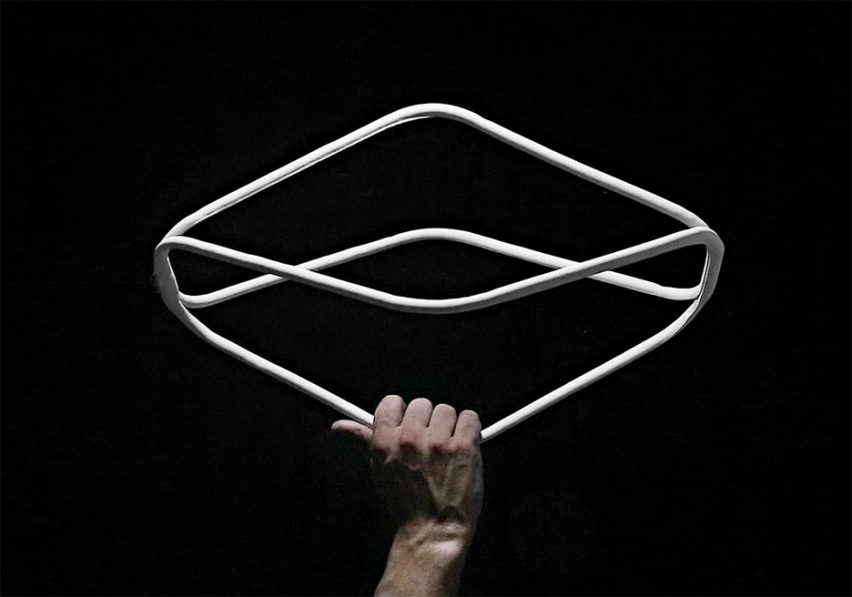
Designer Yuka Hiyoshi from Steelcase has also used the process to create a tabletop that can be made to the exact size required by the customer, as part of a collection called Bassline.
Steelcase sees the technology as an important step in developing customisable office furniture and spaces, while Tibbits believes it also has wider potential.
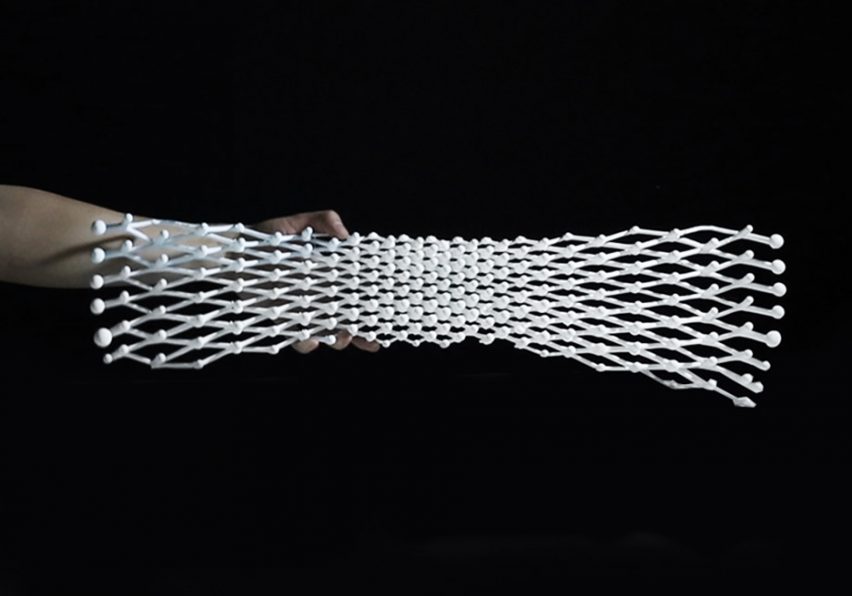
He thinks it could utilised in any large-scale manufacturing, including aerospace, automotive and architectural applications.
Tibbits presented the project during the Being Material symposium, which was organised by MIT's Center for Arts Science and Technology (CAST) and took place from 20 to 22 April 2017.
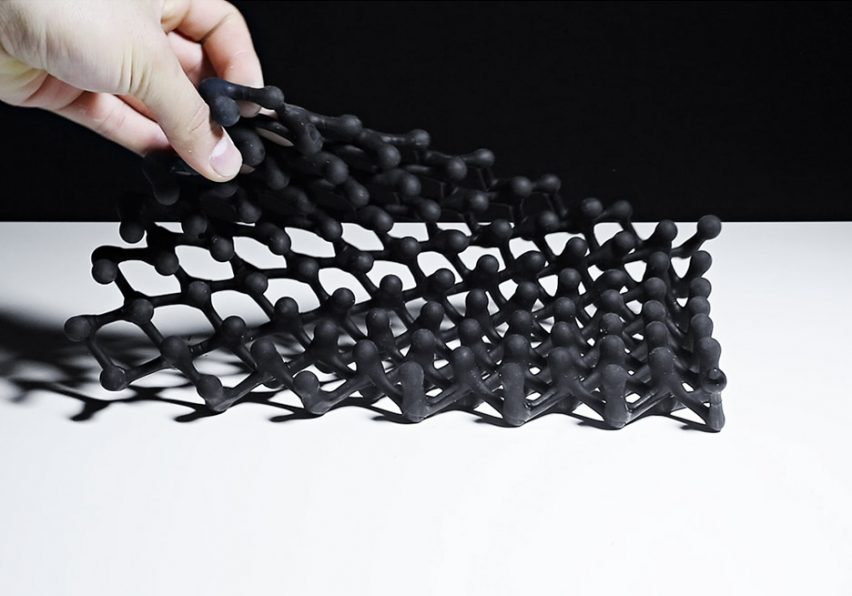
During its research, the Self-Assembly Lab has also developed a material that tightens in cold weather to keep in warmth and a method of construction in which a robot builds using just gravel and string.
Project credits:
Self-Assembly Lab team: Kate Hajash, Bjorn Sparrman, Mattis Koh, Schendy Kernizan, Jared Laucks and Skylar Tibbits. In collaboration with Christophe Guberan.
Steelcase team: Yuka Hiyoshi, Rob Poel, Markus McKenna, Paul Noll, Sharon Tracy, Edward Vander Bilt, Chris Norman and Charlie Forslund